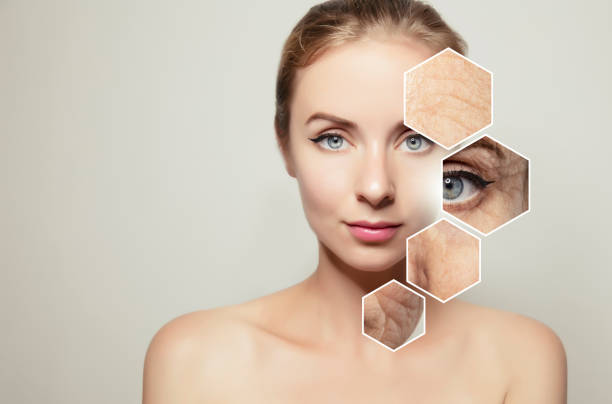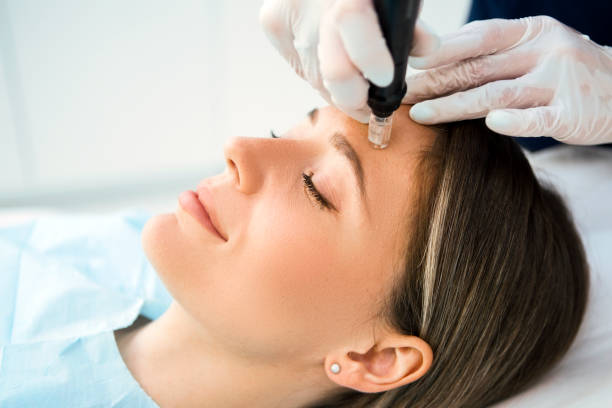
The skin is the largest organ in the body that protects the body from external threats such as viruses and bacteria. It also helps to keep the skin healthy. Millions of people in Canada live with skin conditions such as rosacea and psoriasis. As such, they need to visit a dermatologist.
In this article, we will look at everything you need to know about dermatologist treatment and Insurance Canada and answer the question, “Is dermatologist covered by Insurance Canada.”

Is Dermatologist Covered By Insurance Canada
In Canada, provincial health insurance plans cover dermatologists’ medical services. And if your province doesn’t cover your dermatologist’s medical service, you can always get it covered by private insurance plans. The eligibility for provincial coverage varies from province to province. Still, generally, dermatological services must be considered medically necessary, and a doctor or nurse practitioner must refer you for it to be covered.
However, certain limitations, such as specific treatments or procedures that are not covered or certain eligibility requirements, may exist. You must check with your provincial or territorial health authority to understand the exact coverage for dermatology services in your region. However, overage public health insurance does not cover clinic assessments, appointments, or medically unnecessary or cosmetic procedures.
Remember that if you have private health insurance coverage in addition to your government health plan, it may offer additional benefits for dermatological services, such as coverage for cosmetic procedures or treatments not covered by the government plan.
Disclosure: My site is reader-supported. I may get commissions when you click through the affiliate links (that are great products I use and stand by) on my articles.

Dermatologist
- Millions of people in Canada live with skin conditions such as rosacea and psoriasis. As such, they need to visit a dermatologist.
- In this article, we will look at everything you need to know about dermatologist treatment and Insurance Canada and answer the question, “Is dermatologist covered by Insurance Canada.”
What Are The Common Dermatology Procedures Covered And Not Covered By Insurance Canada
 The coverage of dermatology procedures can vary depending on the province or territory in Canada and your specific health insurance plan. However, below is a general overview of standard dermatology procedures commonly covered and not covered by insurance in Canada.
The coverage of dermatology procedures can vary depending on the province or territory in Canada and your specific health insurance plan. However, below is a general overview of standard dermatology procedures commonly covered and not covered by insurance in Canada.
Common Dermatology Procedures Covered by Insurance in Canada:
- Skin Biopsies: Diagnostic procedures to examine skin lesions, moles, or rashes for potential skin conditions or cancers.
- Skin Allergy Testing: To identify allergens causing skin reactions.
- Treatment for Skin Infections: Such as bacterial or fungal infections.
- Acne Treatment: Including prescription medications, topical treatments, and certain oral medications.
- Treatment for Psoriasis: Such as topical medications, phototherapy, and oral systemic medications.
- Eczema Treatment: Including topical steroids and other prescription medications.
- Treatment for Skin Cancer: Including surgical excision, cryotherapy, and other necessary treatments.
- Wart Removal: For medically necessary cases.
- Treatment for Hives: When caused by an underlying medical condition.
Common Dermatology Procedures Not Covered by Insurance in Canada:

- Cosmetic Procedures: Botox injections, dermal fillers, and chemical peels for cosmetic purposes.
- Laser Hair Removal: Generally considered cosmetic unless used for specific medical conditions like pilonidal cysts.
- Tattoo Removal: Typically considered cosmetic unless medically necessary for specific conditions.
- Non-Medical Mole Removal: If the mole removal is considered cosmetic and not for medical reasons.
- Varicose Vein Treatment: Often considered cosmetic unless there are specific medical indications.
How To See A Dermatologist In Ontario?
To see a dermatologist in Ontario, Canada, you need a referral letter from a primary care physician, such as a family doctor or a nurse practitioner. If your primary care physician believes that you require specialized care from a dermatologist, they will provide you with a referral. Ask for the referral letter, which typically contains essential information about your condition and medical history.
With your referral, you can now search for a dermatologist in your area. You can visit the official website of the College of Physicians and Surgeons of Ontario (CPSO) to find registered dermatologists in Ontario.
Does Health Insurance Cover Dermatology
Health insurance coverage for dermatology services can vary depending on your type of health insurance plan and the specific services you need. Here are some common types of health insurance and how they typically cover dermatology:
Private Health Insurance:
Many private health insurance plans include coverage for dermatology services. The level of coverage can vary significantly depending on the insurance company and your specific plan. Some plans may cover medical and cosmetic dermatology procedures, while others may have limitations or exclusions for certain treatments.
Employer-Sponsored Health Insurance:
If you have health insurance through your employer, it may include coverage for dermatology services. Like private insurance, the coverage will depend on the specific plan offered by your employer.
When choosing health insurance for dermatology coverage, consider the following factors:
- The extent of coverage for dermatology services, including medical and cosmetic treatments.
- The cost of premiums, deductibles, copayments, and out-of-pocket expenses.
- A network of dermatologists and specialists is available under the plan.
- Any restrictions, waiting periods, or pre-authorization requirements for dermatology treatments.
- The specific conditions or treatments you may need and whether they are covered.
How Do I Know If My Insurance Covers My Dermatology Treatment?
 Here are the steps to determine whether your health insurance covers your dermatology treatment.
Here are the steps to determine whether your health insurance covers your dermatology treatment.
Review Your Insurance Policy:
Review your health insurance policy documents, including the plan summary or benefits booklet. Look for information related explicitly to dermatology or specialty care coverage. Pay attention to any exclusions, limitations, or specific requirements for dermatological treatments.
Check Coverage Details:
Identify the specific dermatology treatment or procedure you need and check if it falls under the covered services in your policy. Different treatments may have different coverage levels, so it’s essential to be specific in your inquiry.
Contact Your Insurance Provider:
If you’re uncertain about the coverage or have questions about your policy, contact your insurance provider’s customer service department. You can find their contact information on your insurance card or the company’s website.
Inquire About Specific Treatments:
When speaking with the insurance representative, provide them with the details of the dermatology treatment you require. Ask whether it is covered under your policy and if you may need to pay any out-of-pocket costs, such as deductibles, copayments, or coinsurance.
Verify Network Providers:
If your insurance plan requires you to use in-network providers, ask if the dermatologist you wish to visit is part of the network. In-network providers usually have agreed-upon rates with the insurance company, which can affect your out-of-pocket expenses.
Ask for Pre-authorization:
Sometimes, your insurance plan may require pre-authorization for specific dermatology treatments. Ask the insurance representative about the pre-authorization process and any associated requirements if necessary.
Remember that insurance coverage can be complex, and policies vary significantly between providers and plans. It’s essential to be proactive and informed when dealing with insurance matters.

Dermatologist
- Millions of people in Canada live with skin conditions such as rosacea and psoriasis. As such, they need to visit a dermatologist.
- In this article, we will look at everything you need to know about dermatologist treatment and Insurance Canada and answer the question, “Is dermatologist covered by Insurance Canada.”
How Can I Make My Dermatology Treatments More Affordable?
 Getting insurance coverage is the best way to make your dermatology treatment more affordable. Check your province health insurance to see if they cover your specific dermatologist service coverage. You can also get private insurance coverage for it.
Getting insurance coverage is the best way to make your dermatology treatment more affordable. Check your province health insurance to see if they cover your specific dermatologist service coverage. You can also get private insurance coverage for it.
However, if you don’t have insurance, here are some ways to make your dermatologist treatment more affordable.
Check for Discounts:
Some dermatology clinics or providers may offer discounts for self-pay patients or patients without insurance. Inquire about any available discounts or payment plans.
Health Savings Account (HSA) or Flexible Spending Account (FSA):
If you have an HSA or FSA, use these accounts to cover eligible dermatology expenses with pre-tax dollars, potentially reducing overall costs.
Seek Generic Medications:
If your dermatologist prescribes medications, ask if generic versions are available. Generic medications are typically more affordable than brand-name drugs.
Compare Prices:
If the treatment or procedure is not urgent, consider obtaining quotes from multiple dermatology clinics. Prices vary, and comparing costs may help you find a more affordable option.
Consider Teledermatology:
Some dermatologists offer virtual consultations through telemedicine platforms. Virtual visits can be more cost-effective, especially for follow-up appointments.
Use Prescription Savings Programs:
Some pharmaceutical companies and third-party websites offer prescription savings programs that can help reduce the cost of certain medications.
Ask About Payment Plans:
If the dermatology treatment is costly, inquire if the clinic offers payment plans or instalment options to spread the expense over time.
Look for Free or Low-Cost Clinics:
Some communities have free or low-cost clinics that provide dermatology services to individuals without insurance or financial constraints. Research if such clinics are available in your area.
How To Find Health Insurance That Covers Dermatology?
You can use online insurance comparison websites to compare different health insurance plans. These tools can help narrow your options based on coverage details, premiums, deductibles, and other essential factors.
Also, to find health insurance covering dermatology, you can contact insurance agents or brokers representing different insurance companies. They can provide personalized assistance in finding a health insurance plan that meets your needs, including coverage for dermatology services.
Once you identify potential health insurance plans, thoroughly review the plan details, including the benefits, coverage limits, copayments, deductibles, and network providers. Look specifically for information about dermatology coverage.
Also, if you are employed, check if your employer offers health insurance benefits. Employer-sponsored plans often provide group coverage at competitive rates.
Can I See A Dermatologist Without A Referral Canada?
 In Canada, you can sometimes see a dermatologist without a referral. While a primary care physician (family doctor or nurse practitioner) referral is a common route to access specialist care, including dermatology, some dermatologists in Canada accept self-referrals or direct appointments without a referral.
In Canada, you can sometimes see a dermatologist without a referral. While a primary care physician (family doctor or nurse practitioner) referral is a common route to access specialist care, including dermatology, some dermatologists in Canada accept self-referrals or direct appointments without a referral.
If you wish to see a dermatologist without a referral, you can contact dermatology clinics or specialists directly to inquire about their appointment process. Some private dermatology clinics may allow patients to book appointments without a referral, especially for specific non-urgent or cosmetic procedures.
Does Insurance Cover Cosmetic Dermatologist Treatment?
Generally, cosmetic dermatology treatments are not covered by health insurance in Canada. Cosmetic procedures are typically considered elective and not medically necessary, so health insurance companies do not cover them. You usually have to pay for them out-of-pocket. Some dermatology clinics may offer financing options or payment plans to make cosmetic treatments more affordable for their patients.
Examples of cosmetic dermatologist treatment include:
- Botox injections for wrinkle reduction.
- Dermal fillers for volume restoration.
- Chemical peels for skin rejuvenation.
- Laser hair removal for cosmetic purposes.
- Microdermabrasion for exfoliation.
- Non-surgical body contouring treatments.
- Tattoo removal for non-medical reasons.
Do You Have To Pay To See A Dermatologist In Ontario?
In Ontario, if you are seeing a dermatologist within the public healthcare system covered by OHIP (Ontario Health Insurance Plan), the cost of the dermatology visit is typically covered by the government. However, you will need a referral from a primary care physician (family doctor or nurse practitioner) to access dermatology services under OHIP.
If you seek dermatology services from a private clinic or dermatologist not covered by OHIP, you will likely need to pay for the visit. The fees vary depending on the services provided and the dermatologist’s expertise.
People Also Ask:
How Much Does A Dermatologist Visit Cost In Canada?
To visit a dermatologist for free in Canada, you have to get a referral from a doctor and wait for weeks or months, and see a dermatologist. However, you can decide to see a dermatologist without a referral and pay out of pocket, which can be up to $125
Is Dermatology Covered In Alberta?
Yes, Alberta Health Care covers all dermatology consultations as long as you meet the criteria of your medical dermatology treatment, which is that the dermatology treatment must be medically necessary. You must obtain a referral from a doctor or nurse practitioner.
Do I Need A Referral To See A Dermatologist?
To see a dermatologist in Canada, you usually require to bring a referral from a primary care physician or a healthcare provider if you need your dermatologist’s treatment to be covered by the public healthcare system.
Does OHIP cover Skin Tag Removal?
OHIP (Ontario Health Insurance Plan) typically does not cover the removal of skin tags because it is considered a cosmetic procedure. Skin tags are considered benign and non-medically necessary, so their removal is usually considered an elective or cosmetic treatment.

Dermatologist
- Millions of people in Canada live with skin conditions such as rosacea and psoriasis. As such, they need to visit a dermatologist.
- In this article, we will look at everything you need to know about dermatologist treatment and Insurance Canada and answer the question, “Is dermatologist covered by Insurance Canada.”
Conclusion
Dermatologist treatments are covered by public and private health insurance as long as they are medically necessary and you have a valid referral from a medical doctor.






